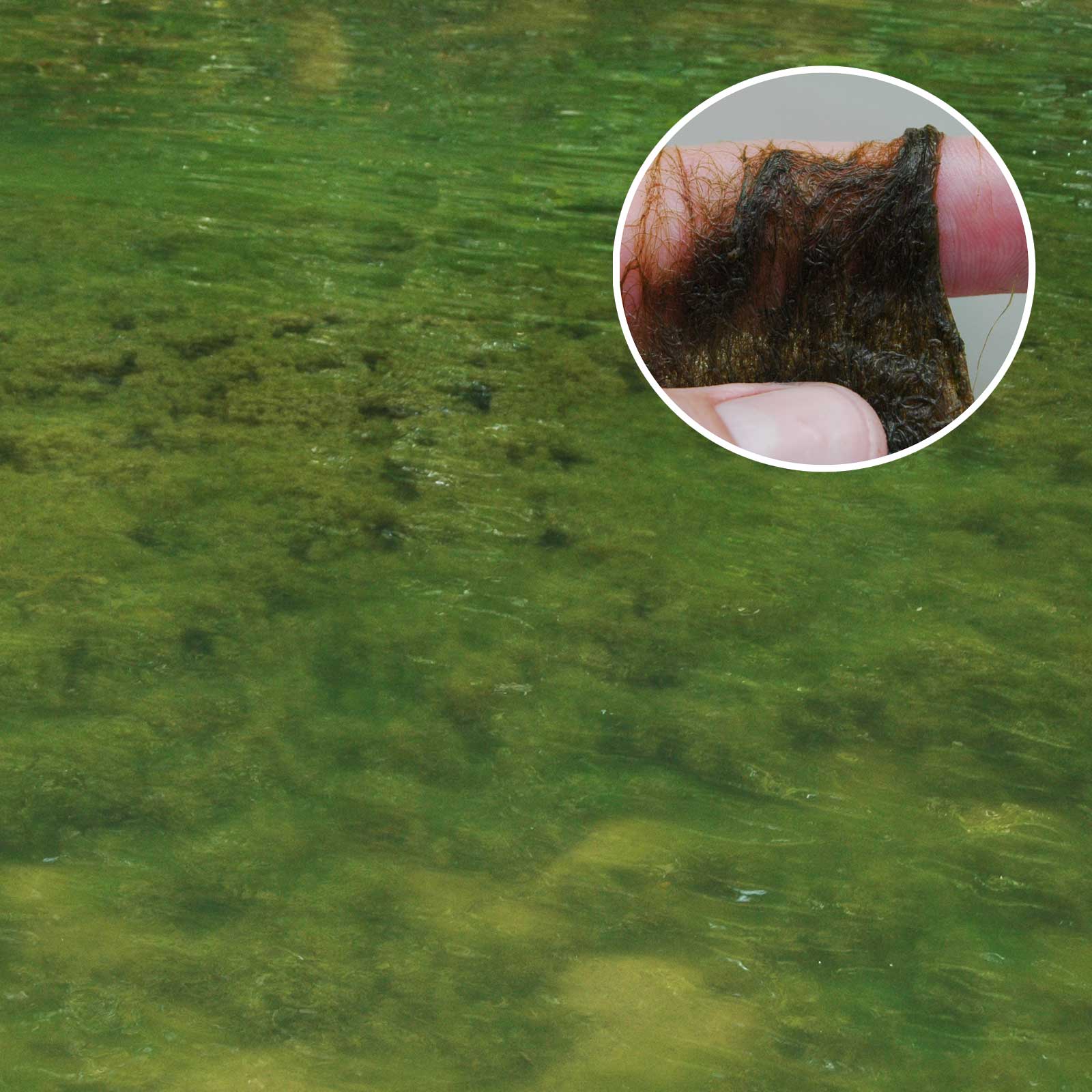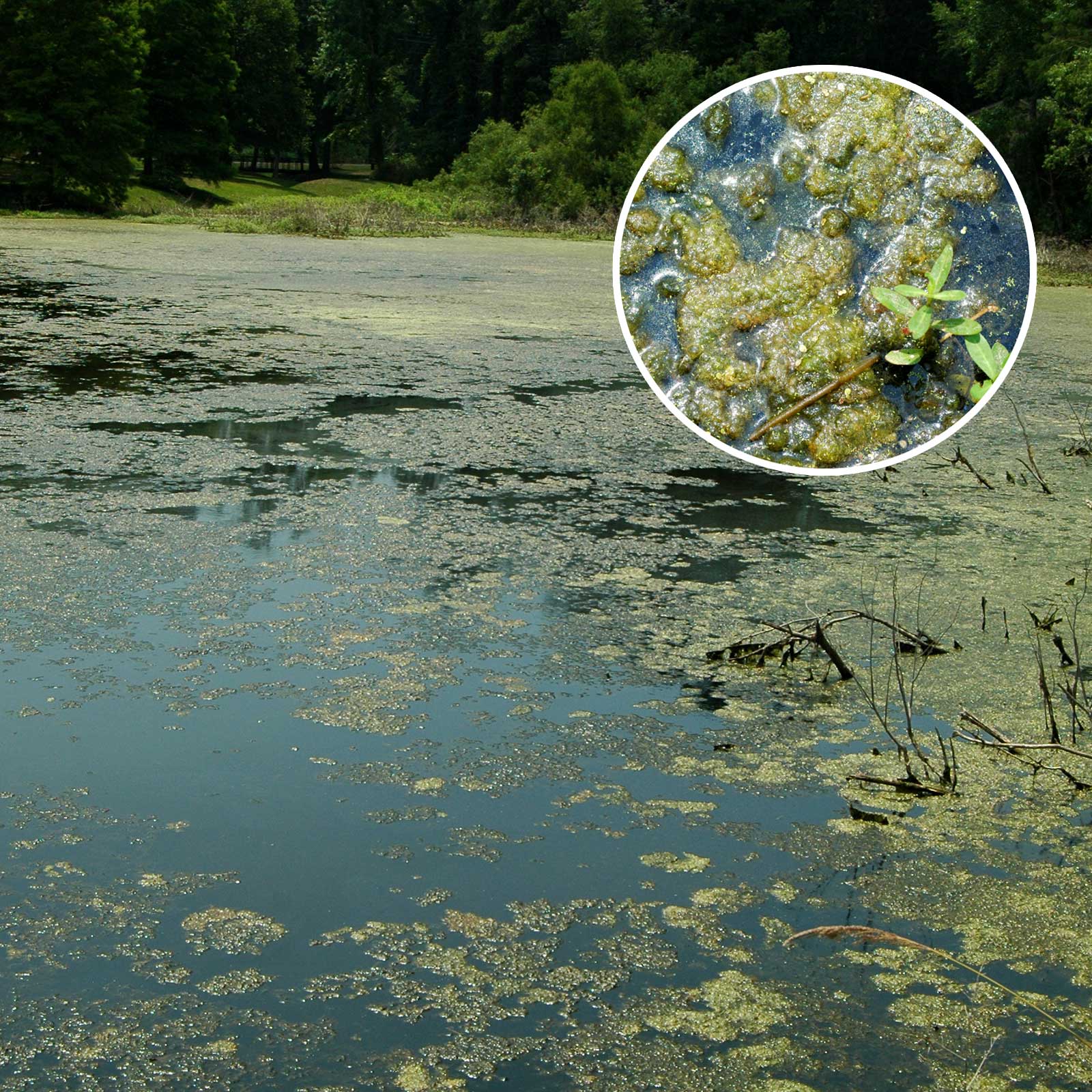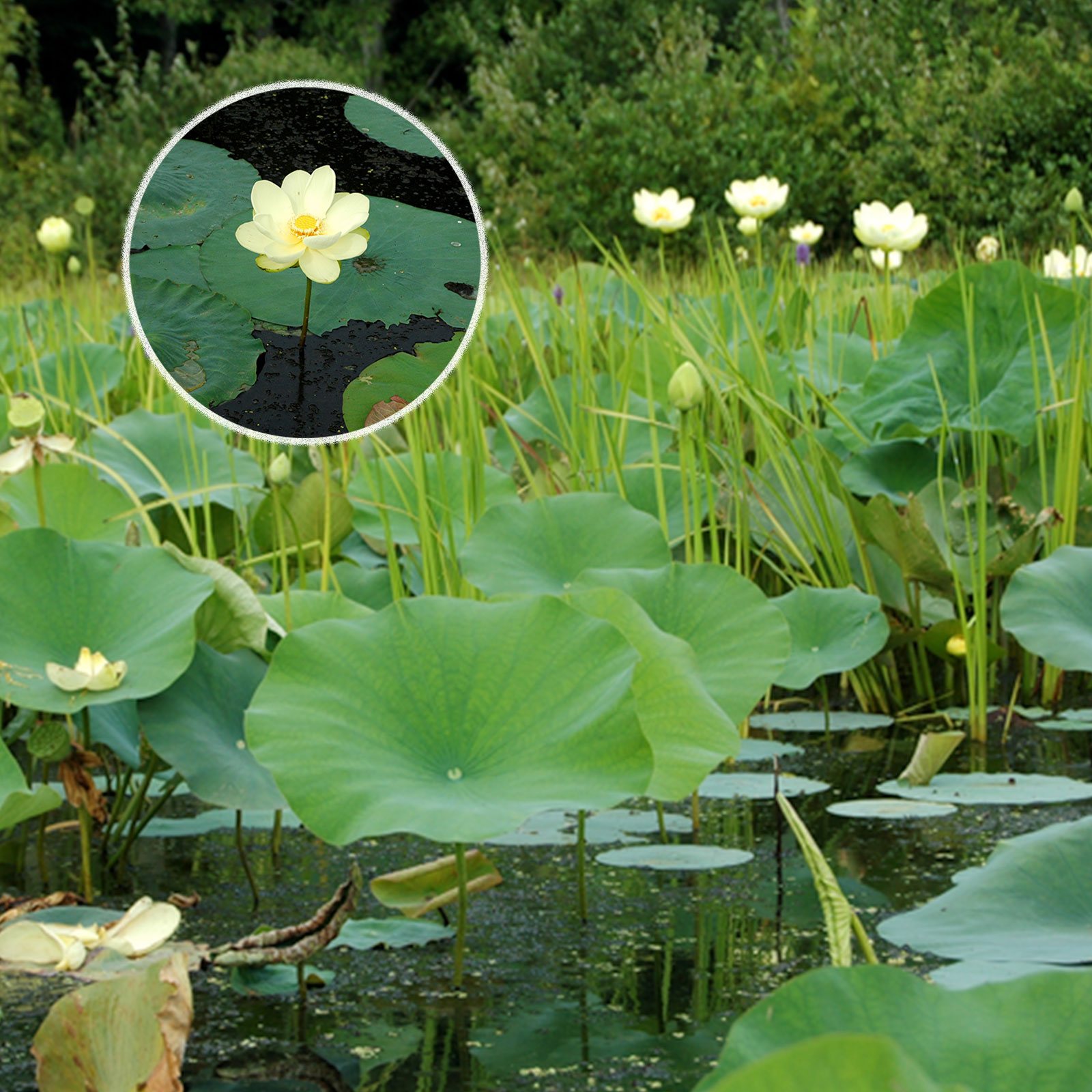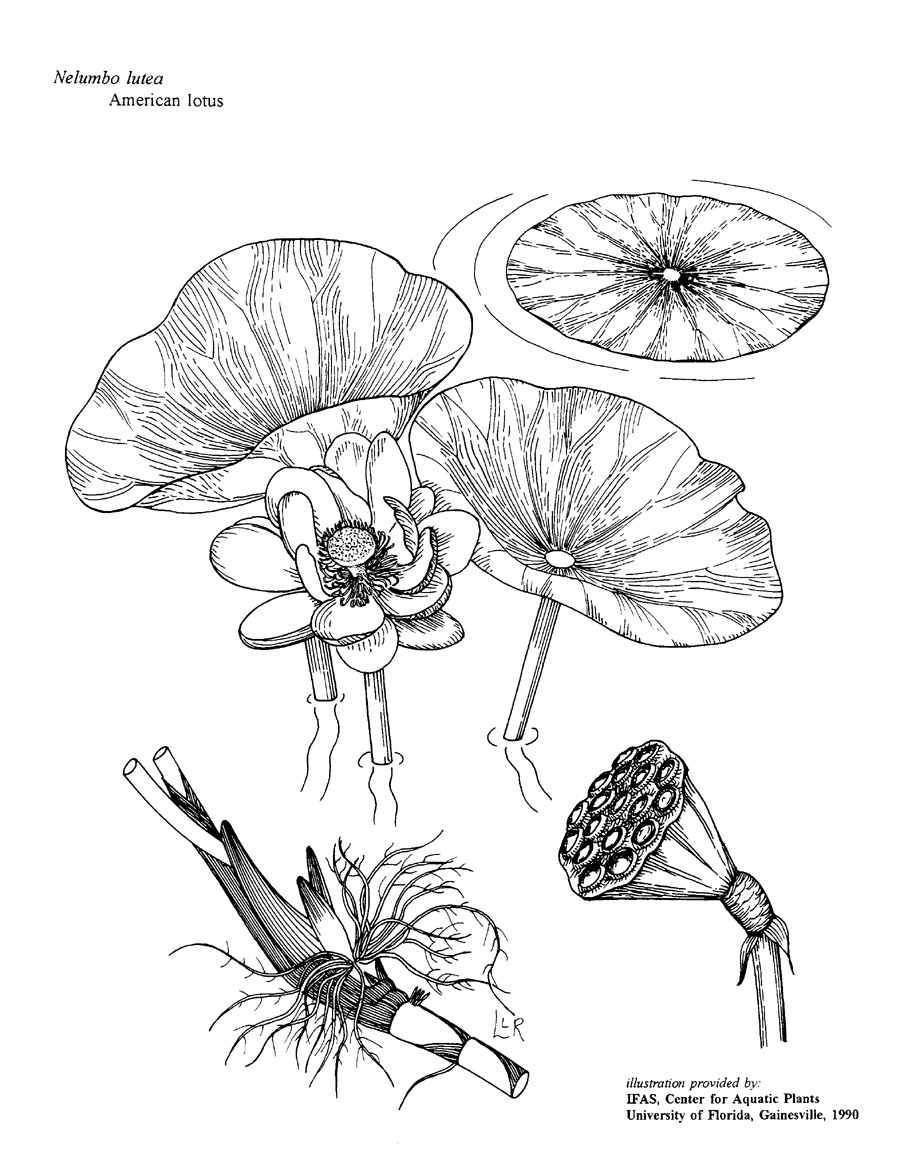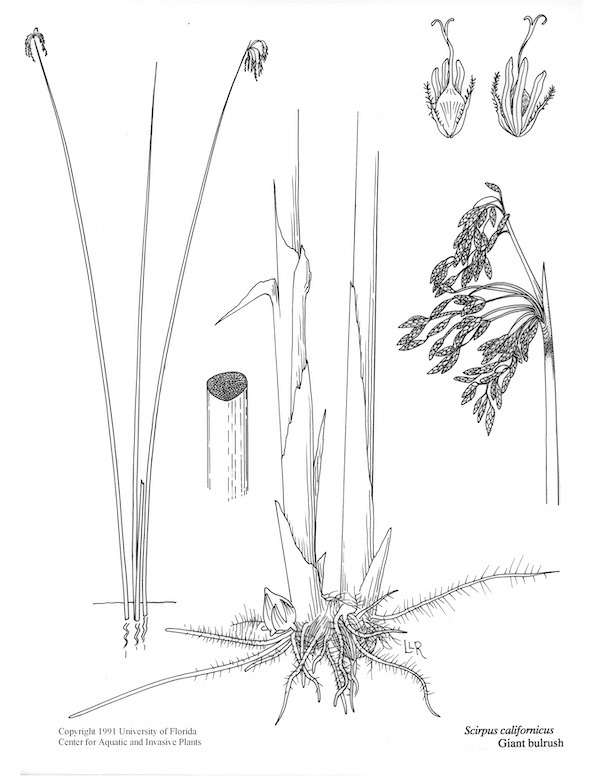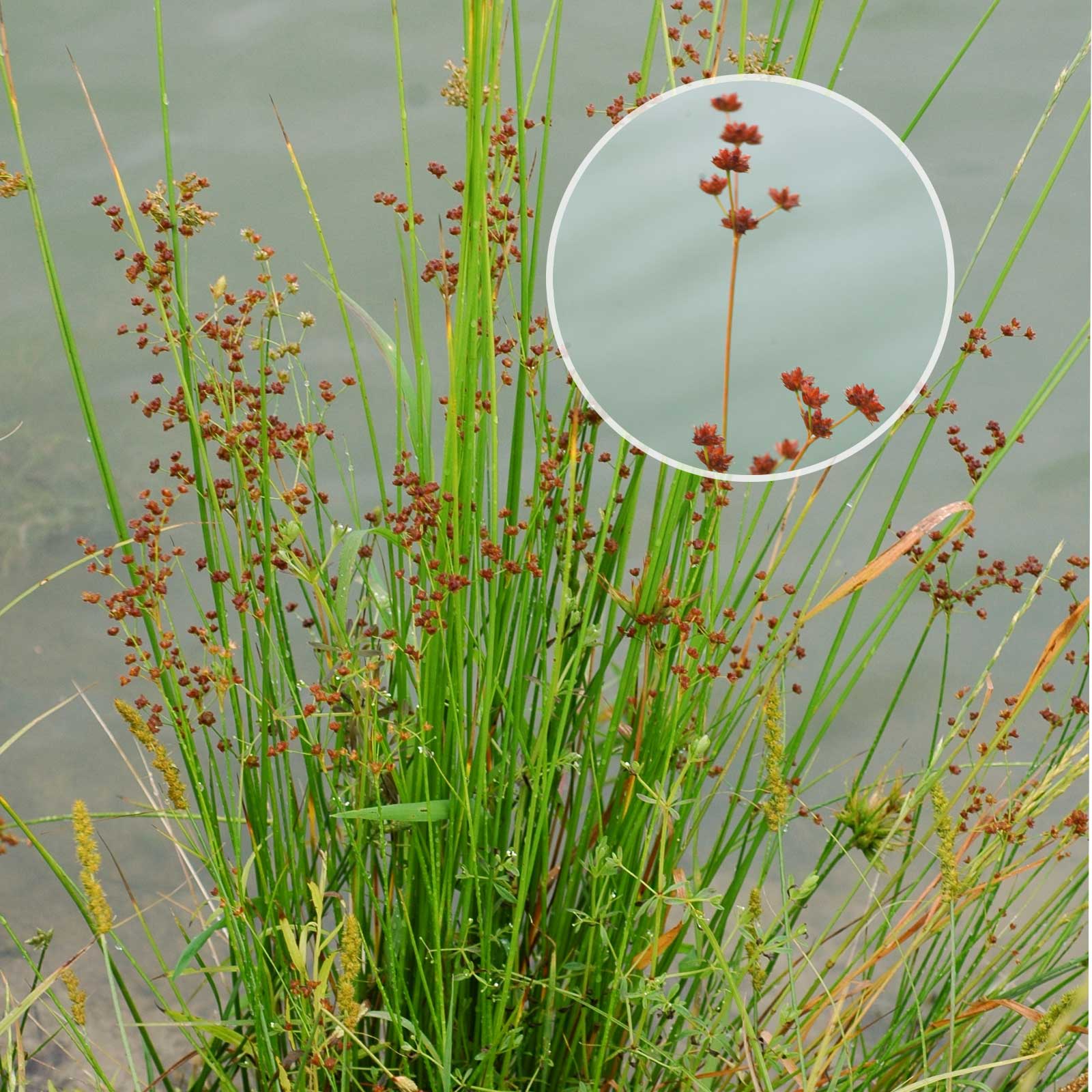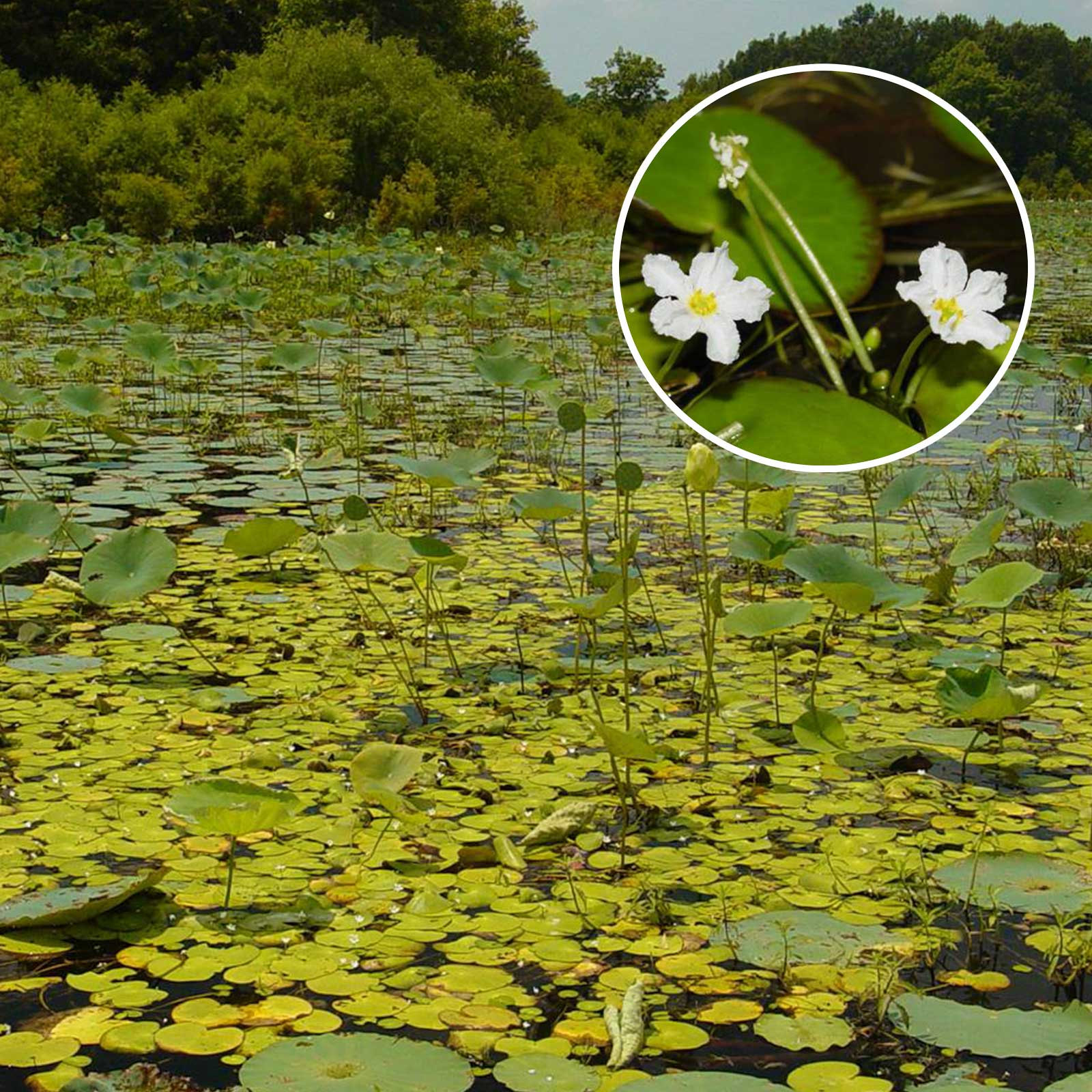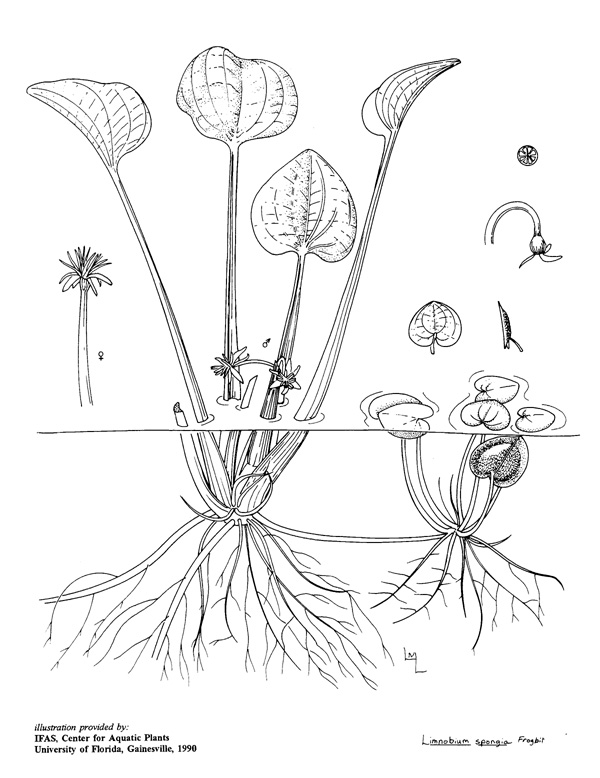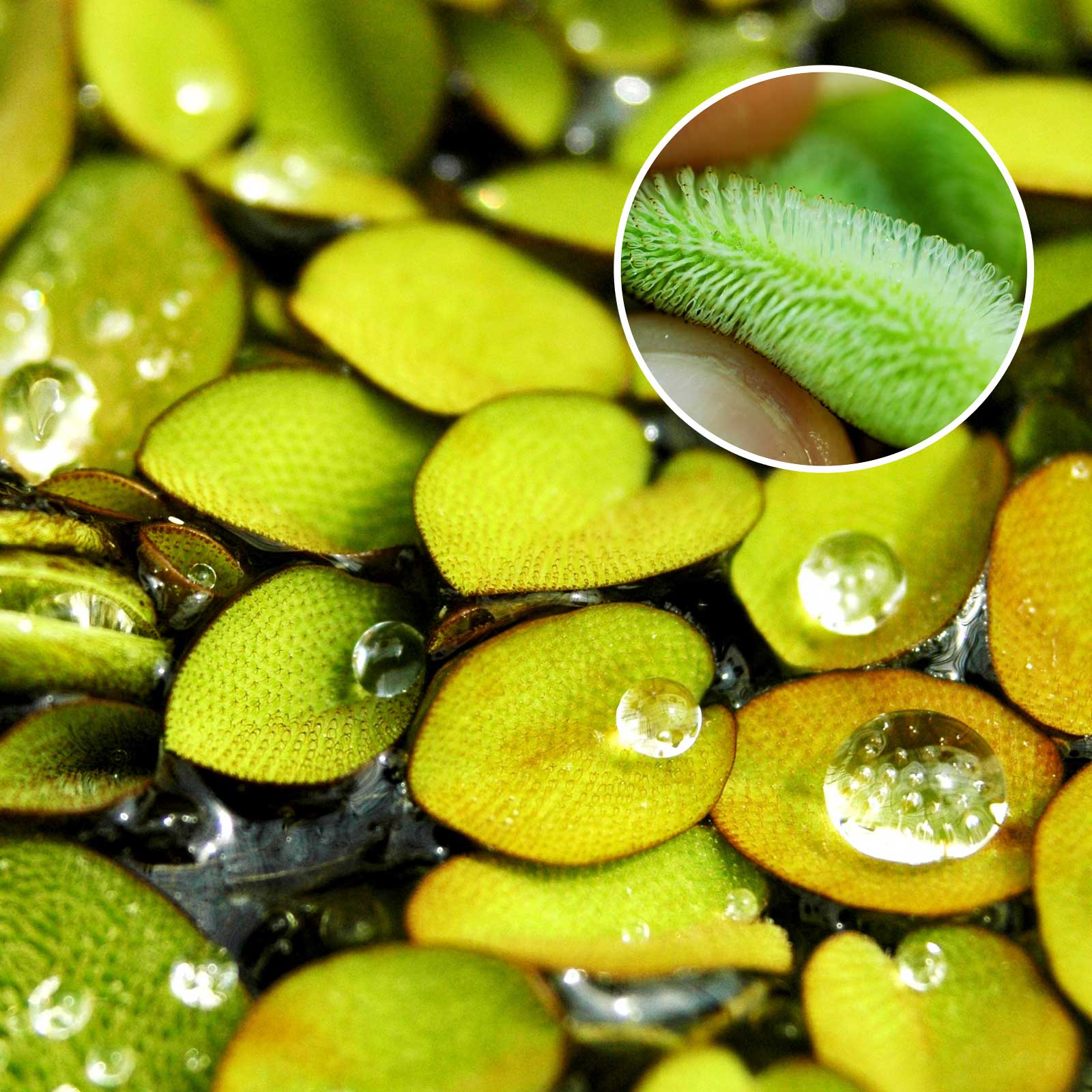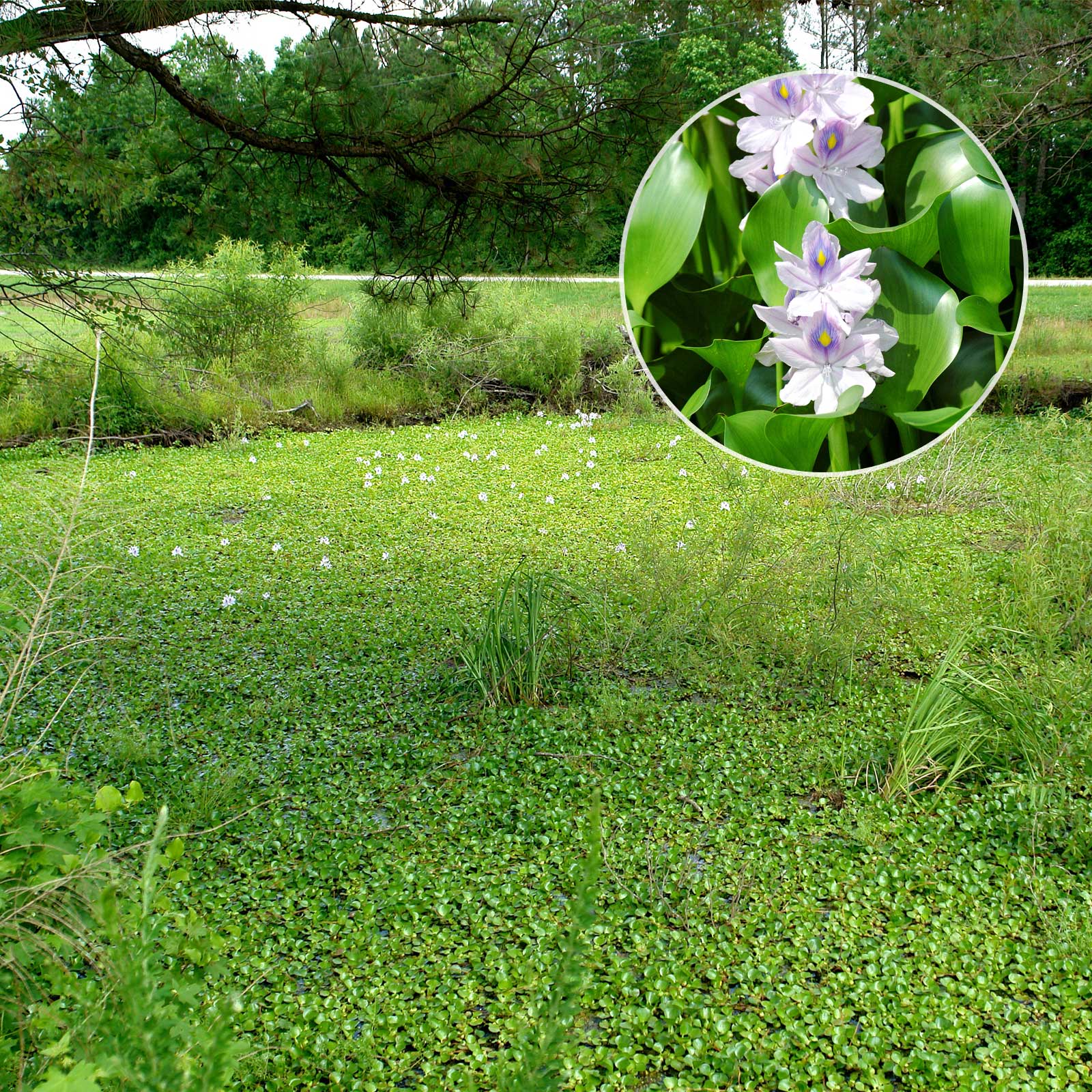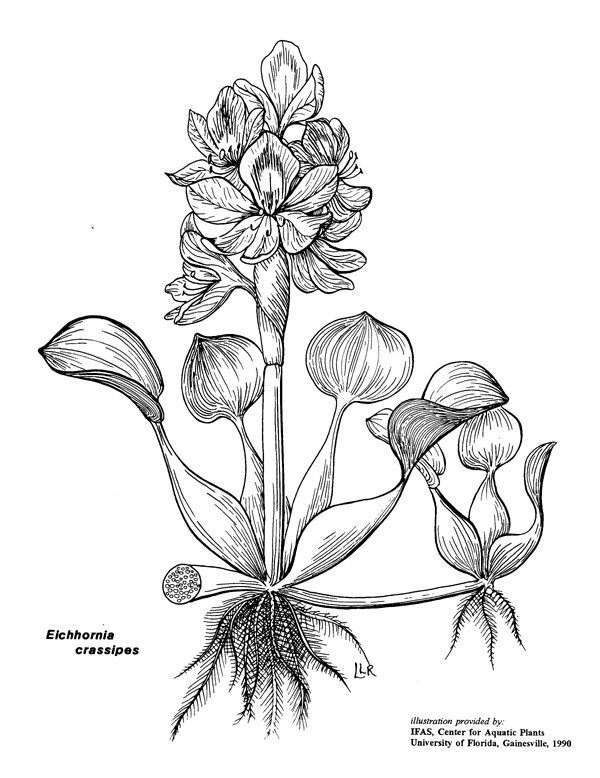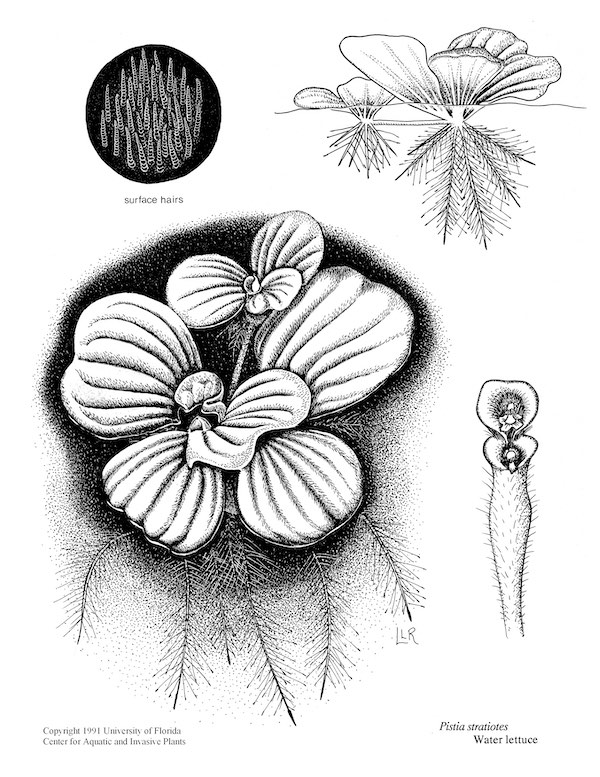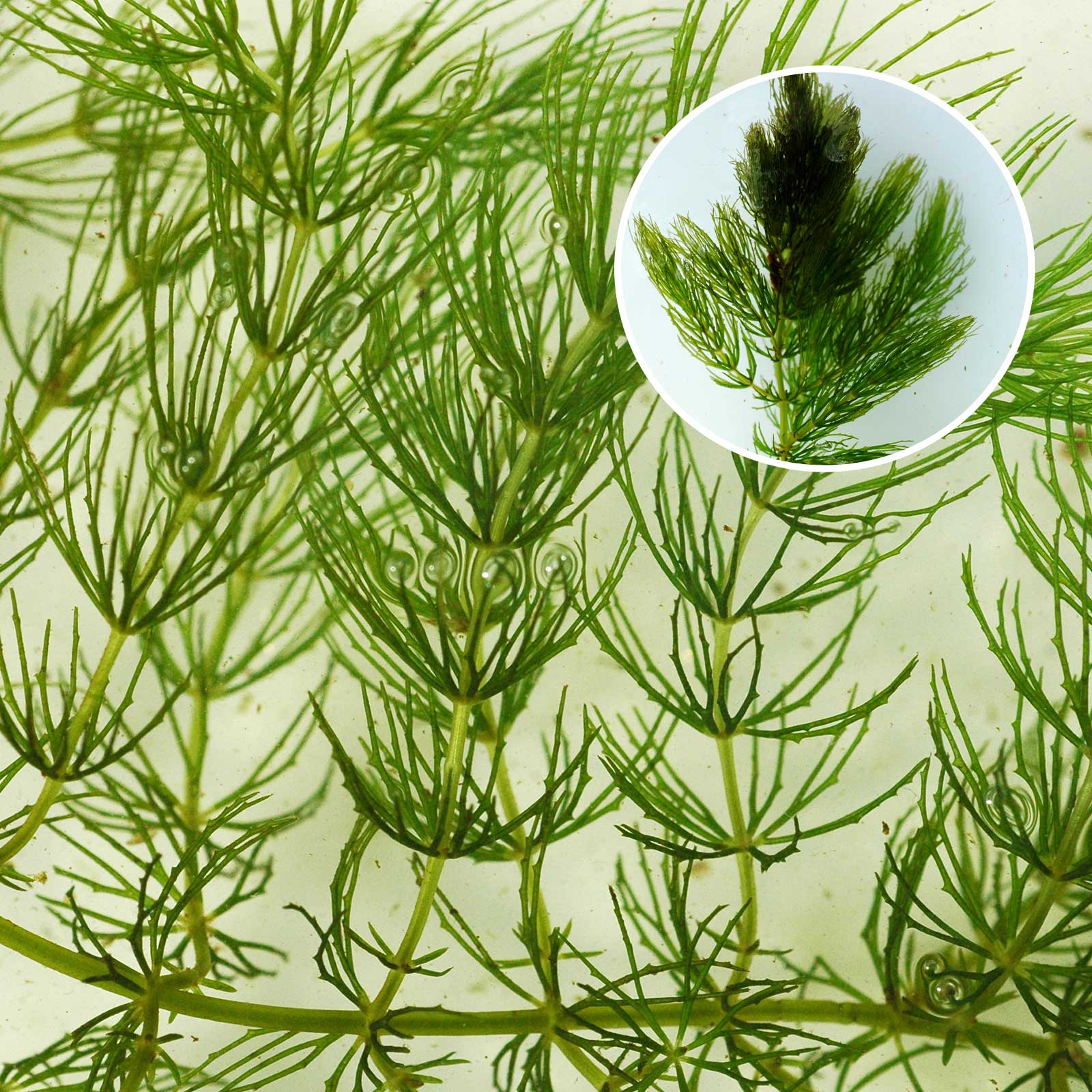SCROLL DOWN FOR MORE INFORMATION
Algae Weed Identification
Non-native plants in North Carolina waters are responsible for most Algae and Weed problems in our state. The lack of natural controls and predators allows these plant species to flourish in public and private waterways. Weeds, (such as hydrilla, and water hyacinth), impair the water flow of streams and rivers, they clog intakes and provide breeding grounds for mosquitoes and other pests.
Unwelcome aquatic vegetation can negatively impact the health and appearance of our ponds and lakes interfere with recreation, displace native species, and they may upset the balance of fish populations.
Algae Weed Identification and Control for Optimal Pond Care
Pond Lake Management can help develop a Pond Maintenance plan that helps control weeds and manage harmful algae and weeds in your pond or lake. In the section below you will find a few of the invasive aquatic weed & algae species found In North Carolina. If you find any of these weeds in your pond or lake, give us a call today, we can help return your waterway to a healthy environment with an appealing appearance.
Plantonic
Planktonic algae are distributed throughout your pond or lake and give the water a unique color. Planktonic algae give the water the appearance of having been dyed. When Plantonic algae bloom it can blow across the pond and form large concentrations along the shores of the lake or pond and cannot be pulled out of the water like other forms of algae.
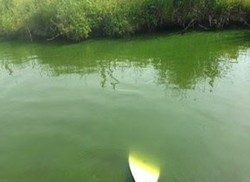
Examples: Chlamydomonas, Chlorella, Eugleana, Closterium, Anacystis
Filamentous
Filamentous Algae generally form mat-like entanglements on the bottom or the surface of the water. This algae is typically long, stringy and slimy to the touch. Filamentous algae can be harmful to an aquatic system because they can overtake stagnant bodies of water with high levels of nutrients. Usually appears green but turns yellow and brown as it dies.
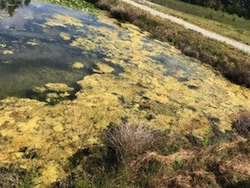
Examples: Spirogyra, Anabaena, Spirulina, Lyngbya, and Pithophora
Macro-algae
Macro-Algae is multicellular algae and commonly live in a similar ecological niche and can be confused with aquatic plants. Seaweeds are a type of macro-algae and usually grow in marine systems not freshwater. Macro-algae grows up from the bottom of the pond. Several species (ex. Starry Stonewort) are considered invasive throughout the country.

Examples: Chara, and Nitella
Chara
Native:
A coarse, submersed alga that resembles a vascular plant. It has a distinctive foul (musky garlic) odor when crushed. Cylindrical with whorls of 6 to 16 branchlets per node. Internodes consist of a single large cell. Each “stem” can vary in length from several inches to several feet long. The plant may also develop a calcified crust on the leaves that makes it crisp to the touch.
Lyngbya
Invasive
A filamentous alga, made up of large mats of filaments that resemble human hair. Each filament is 50 µm in diameter and composed of stacks of cells. The mats are tightly woven, maybe floating or submersed, and have a strong musky, earthy smell.
A filamentous alga, made up of large mats of filaments that resemble human hair. Each filament is 50 µm in diameter and composed of stacks of cells. The mats are tightly woven, maybe floating or submersed, and have a strong musky, earthy smell.
Habitat: Lyngbya infestations may be associated with excess nutrients (calcium or phosphorus). The large floating mats are formed during warmer parts of the year. Lyngbya is present in the southeastern U.S. and west to Texas.
Human Health Concerns:
May release toxins into drinking water, and can also cause a dermatological reaction when touched.
Pithophora
Native:
Has long, branched filaments composed of numerous cells. Floats in round aggregations that can range from 1 to 8 in. in diameter. The clumps may feel like a wet cotton ball when squeezed. Unlike many alga, Pithophora is not slimy to the touch, but rather cottony and coarse. When taken out of the water, each mass is hard to tear apart and keeps its formation. Filaments may be seen with the naked eye.
Habitat:
Can infest ponds and other slow-moving waters. Growth of this alga is common in summer but can persist year-round in heavier infestations. As with other algae, infestations are associated with nutrient-rich waters.
Spirogyra
Native:
A common filamentous algae that has spirals of chloroplasts within each cell. These algae can be found floating or submersed and are often tangled with other alga or plants. Spirogyra is bright green early in the season but can darken or fade over time. When held, it feels very slippery, and individual strands can be detected.
Habitat:
There are many species of Spirogyra, and as a result, they can grow in all types of water and habitats. These algae can quickly clog waterways due to a fast-growth habit. An abundance of these algae can also negatively affect the taste of drinking water, interfere with recreation, and provide a breeding ground for mosquitoes. Spirogyra may be one of the first filamentous algae to start growing in the spring.
American bur-reed
Native: An upright perennial monocot found in the eastern U.S. Weakly rooted, with clustered fibrous roots that allow the plant to be easily pulled up.
Leaves: Flat (1 in. wide), ribbonlike and joined to a round stem.
Fruit: Distinctive; tight, round, green (immature) or brown (mature) “burrs” of 1 in. diameter.
Habitat: Forms large colonies in shallow, slow-moving freshwater (streams, rivers, and natural wetlands). Adaptable to most soil and light conditions.
American Lotus
>Native: A large, showy, rooted perennial with striking white flowers.
Leaves: Un-notched, large (12 to 30 in. diameter), and waxy (repel water). Some leaves float upon the water surface, and others stand slightly above it. All leaves are peltate.
Flowers and Seeds: The flowers are large (>12 in.), white or light yellow, and borne on long terminal spikes. The round seeds are grey-brown and are found inside large brown pods
Habitat: Prefers freshwater environments, often forming very large colonies.
Alligatorweed
Invasive: Noxious in seven states
A perennial that forms large dense mats and is invasive to many agricultural and aquatic communities.
Leaves: Opposite, attached to the stem, and strap to oval in shape. Stem: Usually hollow, and roots prolifically from the nodes. Flowers: White and cloverlike. Found on a short petiole at the end of the stem.
Habitat: Grows rampantly in canals, ditches, wetlands, and slow-moving streams and rivers. Native to South America, but naturalized in the southeastern U.S.
Arrowhead
Native: A genus of about 28 (mostly native) species. Typically perennial, sometimes with rhizomes.
Leaves: Emersed, floating, or submersed on long petioles. Several species with arrowhead-shaped leaves.
Flowers: Mostly in whorls of three on pedicels with three whiteish petals and three sepals.
Roots: Several species form rhizomes with some also forming corms.
Habitat: Generally a shoreline plant that grows in a large grouping. Prefers slow-moving, shallow water.
Cattail
Native: A common perennial with stout rhizomes and erect stems. Widespread throughout North America.
Leaves: Flat, ribbonlike, and arise from ground level. Linear in shape, and sessile to the stem.
Flowers: A brown terminal spike that persists for months. At the end of the season, the spike degrades into a white fuzzy mass. Habitat: Can reach 5 to 6 ft in height. Grows equally well on mineral and organic soils. May be considered a pest plant because it forms large colonies, excluding other plants.
Spikerush

Native: A perennial sedge that forms clumps of leafless plants. It is found only in the southeastern coastal
U.S.
Flowers: Small solitary, terminal spikelets. Each spikelet can sprout and grow while still attached to the parent plant
Stem: Slender and round.
Habitat: May grow completely submerged in water, (a mass of tangled stems) or in a thick stand along the water’s edge (resembling newly sown grass seed). The stems can clog drainage pipes, irrigation systems, and pumps.
Bullrush
Native: Annual or perennial, upright monocot.
About 10 species in the southeastern U.S. Repro-
duction by seed, and some species also form rhizomes.
Stem: Unbranched, usually triangular, and often leafless.
Flowers: Variable, with or without bracts.
Habitat: Wet soils to shallow water. Provides food for birds and muskrats./p>
Giant Cutgrass
Native: A large perennial grass found in the southeastern U.S.
Leaves: Bright green, upright, flat with very sharp edges. Measure 30 in. long and 1 in. wide.
Stem: Thick, to 10 ft tall.
Seedhead: Located at the end of the stems, it is light brown to yellow with numerous seeds. The seedhead has an overall drooping effect.
Habitat: Grows in solitary clumps on shorelines of slow-moving water ways. Provides some nesting cover and food for waterfowl.
Phragmites
Native: A common perennial with stout rhizomes and erect stems. Widespread throughout North America.
Leaves: Flat, ribbonlike, and arise from ground level. Linear in shape, and sessile to the stem.
Flowers: A brown terminal spike that persists for months. At the end of the season, the spike degrades into a white fuzzy mass. Habitat: Can reach 5 to 6 ft in height. Grows equally well on mineral and organic soils. May be considered a pest plant because it forms large colonies, excluding other plants.
Creeping Water Primrose

Invasive: Noxious in N.C., S.C., Wash.
A perennial plant distributed across the southern tier of the U.S. Stems and leaves are usually hairy. Some species have been reported to grow up to 25 ft deep.
Leaves: Alternate and vary in shape from rounded to lanceolate, even on the same plant. Shoots develop in early spring. Stem: Round. Roots at nodes, and can form floating mats.
Flowers: Solitary, bright fellow in color, with five petals and five sepals.
Habitat: Rooted, often floating. Grows on streambanks or in shallow water. In very shallow water the plant grows upright, but in deeper water, the floating stems and leaves will be apparent on the surface.
Taper Tip Rush

Native: A perennial rush commonly found growing at the edge of ponds and lakes. It is found throughout the U.S.
Stem: Bright green, round, and hollow. The tip of each leaf is very pointed.
Seedhead: Striking reddish-brown flower present in the spring and early summer.
Habitat: Commonly found on shorelines of ditches and swamps and meadows.
Azola

Native: A small, floating aquatic fern. It can form a dense mat that completely covers the surface of a water body.
Leaves: Leaves are velvety, small, and frilly. They overlap to create a uniform cluster of plants. Leaf color ranges from green to crimson red and may change during the season. Each leaf has two lobes, and leaves are arranged alternately along the spine of the plant. Spores are produced on the base of the lobes.
Habitat: Prefers slow-moving and shallow water. It is strictly a freshwater plant and is intolerant of saline water. The fern is common in swamps and other slow-moving bodies of water. Azolla is often found growing with other duckweed.
Common Duckweed
Native: A small, free-floating plant with one root per frond. Thick mats of duckweed are found in
ponds and slow-moving waters. The small flattened plants float on the water surface and tend to grow in dense colonies; forming floating carpets. Common duckweed is often interspersed with other varieties of duckweeds and Azolla. Leaves: Rounded or oval, and flat. Leaves are 1/10 to 1/s in. wide. Habitat: Found in clear waters, with the most profuse growth in ditches and swamps that are free from currents. Dense populations can clog irrigation pumps and sprinklers.
Floating Hearts
Native: Perennial aquatic plant with rhizomes and leaves attached to a long, petiole-like stem.
Leaves: Heart-shaped and typically a single leaf attached by a short petiole to a long stem. Undersides have large raised veins and a leathery texture. Fruit: An oblong capsule that contains rounded and smooth seeds.
FIowers: White with wide margins. The petals are smooth on the edges. and there is no crest on the flower as is found with N. cristata. Roots: Tuberous, form clusters resembling bananas at the connection of the stem and petiole. Reproduces through these roots.
Fragrant Water Lilly
Native: A perennial with a very large rhizomatous root system and showy flowers.
Leaves: Circular, with a distinct “pie slice” removed. Floating, and attached to stems under the water. Light to dark green on the top surfaces, and dark green on the underside. The venation is much more pronounced on the underside of leaves.
Flowers: Conspicuous. Usually white and fragrant, but can also be pink to reddish in color. Float on the surface of the water, but are attached to the plant by long peduncles.
Frogs Bit
Native: (Invasive in California) A perennial that can form dense, floating mats. Classified as a noxious weed in California but listed as threatened or endangered in Kentucky and Maryland.
Leaves: Mostly egg or heart-shaped. The underside of the floating immature leaf is covered with a spongy, cell-like texture that aids in leaf flotation. Mother plants usually have erect leaves; daughter plants may have smaller floating leaves.
Flowers and Fruit: Male and female flowers, with narrow white petals, are located at or below the surface of the water. Mature fruit are borne on long peduncles. Roots: Parent plants are connected to daughter plants through extensive stolons. Each plant also has feather-like roots.
Habitat: Can be found growing in shallow, slow-moving freshwater – often rooted in the mud. It can also form dense mats in ditches and ponds.
Giant Duckweeds
Native
Giant duckweeds have two or more roots per frond, unlike other duckweeds. Leaves: Measure 1 /s to ¼ in. diameter and are dark green. The upper surface of each leaf may have a purple dot or slightly purple edges. The underside of each leaf may also be tinged purple. Each
leaf is rounded with a slightly pointed end.
Habitat: Giant duckweed grows in swamps, ponds, and bogs. It can completely cover the surface of the water and clog irrigation pumps and sprinklers. It also can be found growing with other duckweed and Azolla species.
Similar Species: Other duckweeds have one root per frond, and watermeal does not have visible roots and may appear smaller than giant salvinia.
Giant Salvinia
Invasive Federal noxious weed Noxious in many states: An extremely invasive exotic plant. A free-floating fern, giant salvinia can double its biomass in less than a week and may form thick (>3 ft) mats.
Leaves: An identifying feature is the presence of “egg-beater” shaped leaf hairs on the upper surface of each leaf. Located beneath the green floating leaves are dark brown feathery appendages resembling roots, which are modified leaves. Habitat: Found in still water (drainage ditches, canals, ponds, and lakes). The widespread growth of this plant can result in impeded boat navigation and movement of water.
Water Hyancinth
Invasive Noxious in seven states
A floating perennial that can grow 3 ft tall. Rarely produces seed; most reproduction is by stolons. Poses a serious economic threat to waterways in the southeastern U.S.
Leaves: Waxy leaves are rounded and elevated by long, inflated, spongy petioles.
Flowers: Showy (purple, with yellow spots) and borne upon a spike with 5 to 20 individual flowers.
Roots: Fibrous and black to purplish in color. Forms a dense feathery mat beneath the plant
Habitat: Spreads rapidly in slow-moving waters. May overwinter in USDA hardiness zone 7b or warmer climates.
Water Lettuce
Invasive Noxious in six states
A floating, stoloniferous plant, which is usually found en masse. The rosettes are made up of pale, highly pubescent fan-shaped leaves.
Leaves: Sessile, and the leaf blades are simple, ribbed, and covered in many short hairs.
Roots: Form a fibrous mat beneath the rosette.
Habitat: Tends to form floating mats that clog waterways. Prefers shallow, protected waterways.
Unlikely to overwinter in climates colder than USDA hardiness zone 8a.
Water Meal
Native: The smallest flowering plant in the world. It appears as rootless, small green dots and may feel like grits when rubbed between fingers. Can completely cover shallow, slow-moving waterways.
Habitat: Often found growing with duckweed in slow-moving water. It overwinters on the bottom of water bodies.
Bladderwort
Native Free-floating aquatic plant with long under-water floating stems.
True roots are lacking on these carnivorous plants. Distinguished by small, rounded bladders that trap tiny invertebrates.
Flowers: Form on leafless emergent stalks supported by a whorl of floating branches. Flower color depends on species but is usually yellow, pink to purple, or white.
Brittle Naid
Invasive: Noxious in six states
An annual aquatic plant introduced from Europe. Shoots are brittle and readily fragmented, which facilitates its spread.
Leaves: Linear and opposite. Bright green or reddish with rough serrations on margins. Always submersed, and typically stacked with shorter internodes at stem tips.
Habitat: Rarely occurs as a monoculture, instead mixing with other species such as hydrilla. Similar Species: May be distinguished from coontail by its opposite and unbranched leaves. Brittle naiad has opposite leaves, while those of the pondweeds are alternate.
Camboba
Native, with invasive biotypes
A submerged perennial, native to the southeastern U.S. In some northeastern and western states, this plant is considered a prohibited or noxious weed. Stems may be long, resistant to breaking and continue growing just beneath the water surface.
Leaves: Highly dissected fan-shaped leaves. Out of the water, the leaves are not rigid and collapse upon each other. Floating leaves, when present, are small and oppositely arranged. The “Native” biotype foliage is tinged red, the “Aquarium” biotype is tinged green, and the “Invasive” biotype is tinged red on the leaf underside and green on the upper leaf surface.
Flowers: Inconspicuous, small flowers with a yellow center. Borne on long stalks that rise above the waterline when in bloom.
Roots: Weak fibrous roots.
Habitat: Grows in very dense colonies. Initially, colonies tend to be circular in form.
Similar Species: Could be confused with Eurasian watermilfoil, but cabomba has opposite leaves, and milfoil leaves are in whorls of three or more.
Coontail
Native: Rootless, submerged perennial with one main highly-branched) stem. Attaches to sediment by rhizoids.
Leaves: Stiff, whorled, and divided into narrow segments. The leaves are more crowded at the tips of the plant (making the tips darker), which gives it the appearance of a raccoon’s tail.
Fruit: Rarely seen, are nutlets borne in the leaf axils.
Habitat: May be found in dense colonies. Prefers shallow, clear water; however, it is very adaptable and can also be found in fast-moving water.
Eel Grass
Native: Perennial, submersed. Widely used as an aquarium plant and valued as a habitat for fish, waterfowl, and invertebrates. Reproduces by seed, stolons, and rhizomes. Fibrous roots present.
Leaves: Long, thin, and ribbonlike. Grows to 4 ft in length. Each leaf is ½ to 1 in. wide. When held to the light, the parallel venation is easily seen. Although rooted, leaves float in a vertical and horizontal position just beneath the surface of the water.
Habitat: Can tolerate a variety of soil types and fresh to brackish water. Tends to grow in dense, mono-specific stands.
Egeria
Invasive Noxious in eight states
A perennial submersed plant introduced from
Brazil. Often sold as an aquarium plant despite its invasiveness. Leaves: Linear and soft to the touch with very fine serrations on the leaf edge. The middle and upper leaves are usually found in whorls of four to six (although this can vary and is not a reliable identifying factor by itself).
Stem: Circular in cross-section and slender.
Flowers: Delicate, and borne upon long petioles. The petals are White, and the centers are yellow. Flowers appear on the surface of the water during the bloom season (mid-late summer).
Habitat: A rooted plant, but can often be found broken off from the mother plant and floating. Highly invasive, and should be monitored closely.
Elodea
Native: A delicate, perennial, submerged aquatic plant.
Leaves: Smooth with no serrations and lacking petioles. Usually exists in whorls of three to seven along the entire length of the stem. Habitat: Elodea prefers slow-moving, shallow water. It is not particularly invasive, nor does it form large colonies.
Hydrilla
Invasive Federal noxious Weed Noxious in 17 states: A submersed, rooted, perennial aquatic plant with a very fast growth rate. The stems grow quickly to the surface of the water and spread laterally. Hydrilla is one of the most invasive plants infesting waterways in the Carolinas. There are two biotypes: monoecious and dioecious. The dioecious biotype is more robust. Leaves: Oblong, sessile, and whorled in groups of 4 to 8 around the stem. Leaf margins are serrated, and color can range from light to dark green and even reddish depending upon the environment.
Reproduction: Produces fruit and turions. Rigid turions produced at the end of lateral branches. Habitat: Can form large, dense infestations, especially in cooler climates. Tolerant of brackish water.
Parrot Feather
Invasive Noxious in six states
Native to South America and introduced to the U.S. as an aquarium plant. Colonies typically have both submerged and emergent growth.
Leaves: Whorled, and grey-green (new growth may be bright green). Submersed leaves are larger and more finely divided than emergent leaves. Appear featherlike.
Stems: Elongated and relatively strong. Emergent growth will die back during winter, but submersed growth may continue winter growth in moderate climates (making it more invasive).Reproduction:
Reproduces through fragmentation (as only pistillate plants have been introduced into the U.S.).
Habitat: Generalist, can tolerate a wide variety of conditions.
Bio Film
Biofilm is dead vegetation that is no longer actively growing. The organic matter floats to the surface faster than decomposition can occur.
Because the vegetation is no longer living Algaecides and Herbicides cannot be used to help control it. Aeration of the water surface is usually the best option for control.
Aeration stabilizes the oxygen and pH levels providing room for naturally occurring bacteria and fungi to break down the BioFilm.
Shop our Surface Aeration Products
Weeds & Algae Information Sources:
- NC Cooperative Extension – Aquatic Weeds
- North Carolina State University Libraries




